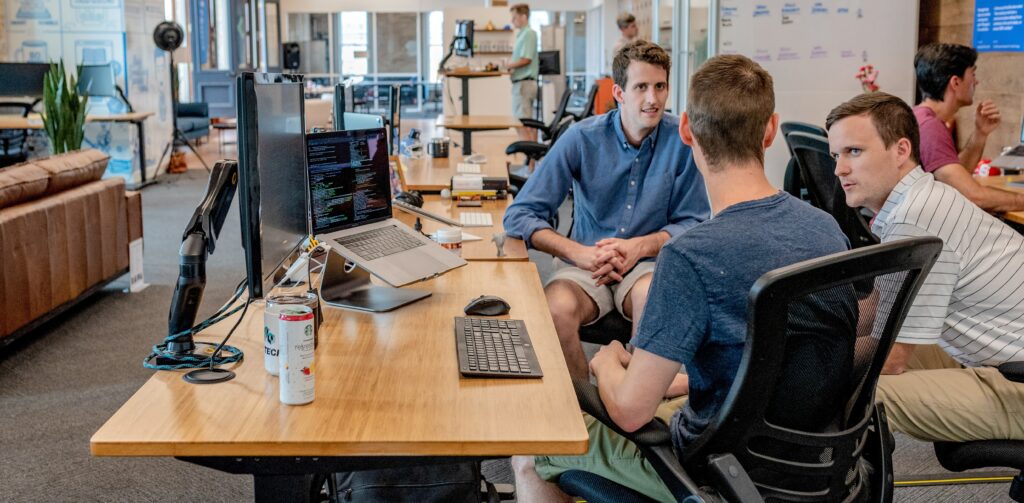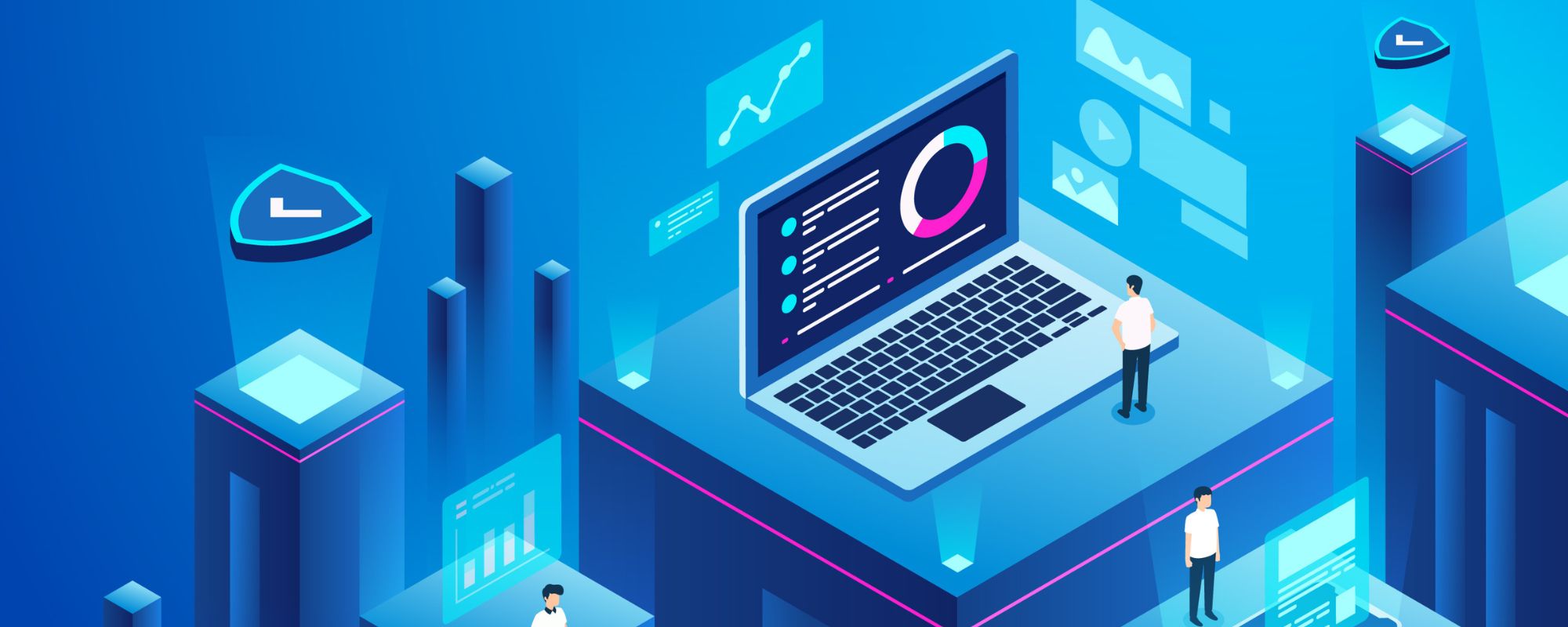The digital landscape is in a constant state of evolution. One of the most transformative shifts in the software industry has been the move to SaaS vs traditional software. This revolution has changed the way businesses operate, making software more accessible, cost-effective, and efficient.
In this comprehensive guide, we’ll delve deep into the SaaS advantages and how it compares with traditional software.
Understanding the Basics of SaaS and Traditional Software
Definition of SaaS
SaaS, or Software as a Service, is a delivery model where software is accessed online via a subscription-like Google Drive, rather than being bought and installed on individual computers.
SaaS solutions are hosted and maintained by the service provider, eliminating the need for users to manage the software themselves. Some popular examples of SaaS platforms include Gmail, Slack, Asana, and Salesforce.
Definition of Traditional Software
In contrast, traditional software, often referred to as on-premise software, is a model where software is bought, installed, and operated on the user’s own hardware.
This model requires the user to manage the software, including installation, maintenance, and updates, leading to higher operational costs and increased complexity.

How SaaS and Traditional Software Models Differ
Here are some of the key differences between SaaS and traditional software:
Deployment and Maintenance: Traditional software requires users to install the software on their individual machines or servers. This process can be time-consuming and often requires the assistance of IT professionals. Additionally, the responsibility of maintaining the software falls on the user, which includes troubleshooting, updates, and backups.
On the other hand, SaaS is a web-based model where the software is hosted on the provider’s servers and delivered over the internet. Users do not need to install anything on their machines. The SaaS provider is responsible for maintaining, updating, and securing the software, simplifying the users’ experience.
Cost Structure: Conventional software typically requires a significant upfront investment to purchase the license. Additionally, businesses may need to invest in hardware infrastructure to support the software and pay for ongoing updates and maintenance.
In contrast, SaaS follows a subscription-based pricing model. Users pay a recurring fee, usually monthly or annually, which often includes maintenance, updates, and customer support. This model can be more affordable, especially for small businesses, as it spreads the costs over time.
Scalability and Customization: Traditional software usually comes as a one-size-fits-all solution. If a business grows or its needs change, it may need to purchase additional licenses or even entirely new software.
SaaS solutions, however, are highly scalable. Businesses can quickly and easily adjust their subscription plan to accommodate growth or changing needs. Many SaaS providers also offer customization options to tailor the software to a business’s specific requirements.
Accessibility and Mobility: With traditional software, access is generally limited to the machines on which the software is installed. This can limit mobility and make remote work challenging.
SaaS solutions are accessible to any device with an internet connection, regardless of location. This enables greater flexibility, as users can access the software from home, while traveling, or from any other location.
Data Security and Recovery: In a traditional software setup, data security and recovery are typically the user’s responsibility. If a server or computer crashes, the user may lose all their data unless they have a backup system in place.
SaaS providers usually have robust data security and recovery measures in place. Data is routinely backed up and stored in secure, off-site locations. In the event of a system failure, users can quickly recover their data.
The Advantages of SaaS vs Traditional Software
The shift towards SaaS is driven by the numerous advantages it offers over traditional software models. These include:
Cost-Effectiveness: One of the primary advantages that SaaS offers is its cost-effectiveness. SaaS eliminates the need for users to purchase, install, and maintain software on their own computers or servers, saving on hardware expenses, maintenance, and IT staffing.
Scalability and Flexibility: SaaS solutions enable businesses to scale their usage up or down based on their needs. Users can easily add or remove features, making it simple to adapt to changes in requirements or business growth.
Accessibility: SaaS applications can be accessed from any device with an internet connection, providing users with the flexibility to work from anywhere at any time. This feature is particularly valuable for remote teams or businesses with employees spread across locations.
Automatic Updates: SaaS providers manage software updates and security patches, ensuring that users always have access to the latest features and improvements without having to worry about time-consuming manual updates.
Ease of Integration: Many SaaS applications are designed to integrate with other software solutions, making it easier for businesses to create a cohesive technology ecosystem. This enables seamless data sharing and streamlined workflows across various platforms.
Faster Deployment: SaaS solutions are often quicker to deploy compared to traditional on-premise software. As the software is already installed and configured on the provider’s servers, businesses can start using it immediately after subscribing.

The Future of SaaS
As we move into the future, the SaaS landscape will continue to evolve, driven by advances in technology, changing business needs, and the growing adoption of open source and AI/ML.
Here are some key trends likely to define the SaaS space in the coming years:
AI/ML Integration: Artificial Intelligence and Machine Learning will revolutionize SaaS, enabling more intelligent and personalized user experiences, improved analytics, and the automation of various processes.
Mobile-First Approach: With the proliferation of smartphones, SaaS providers will need to adopt a mobile-first approach, designing their applications to be accessible and user-friendly on mobile devices.
The proliferation of the API Economy: The increasing importance of Application Programming Interfaces (APIs) will lead to more interconnected and interoperable SaaS applications, enabling businesses to build customized solutions by integrating various services.
Emphasis on Security and Compliance: As more businesses rely on SaaS solutions, security, and compliance will remain top concerns. SaaS providers will need to prioritize these aspects to win the trust of their customers.
Transitioning from Traditional software to a SaaS approach
Transitioning from traditional software to Software as a Service (SaaS) requires strategic planning and careful implementation. SaaS is a method of software distribution where a cloud provider hosts apps and delivers them to users via the internet, offering various advantages over on-premise software such as cost-efficiency, rapid time-to-value, and consistent pricing.
- The transition process is an in-depth analysis of the current software and its compatibility with the SaaS model. It’s essential to understand the differences between SaaS and on-premise software like deployment, cost, scalability, customizability, maintenance, and support, among other factors.
- Once the analysis is done, the next step is to set up the proper processes for the migration. This involves preparing the IT infrastructure in alignment with the cloud delivery model of SaaS, which significantly reduces upfront costs.
- The migration strategy should take into consideration the multitenancy architecture of SaaS and its easy personalization features. An effective strategy should also account for aspects like security, integration, and data backup and recovery.
Post migration, the advantages of SaaS become evident. There’s real-time managing access to security, performance, and availability, alongside minimal management costs. Moreover, SaaS solutions provide easy management, making them a favorite among many businesses.
Conclusion
The evolution of SaaS has been a transformative force in the software industry. By offering greater flexibility, cost-effectiveness, and innovation, SaaS has proved to be a compelling alternative to traditional software.
As technology continues to evolve, and businesses continue to recognize the advantages of SaaS, the adoption of SaaS is only set to grow, heralding a new era in the world of software. Appscrip provides SaaS development services for entrepreneurs and startups looking to break into the market.









